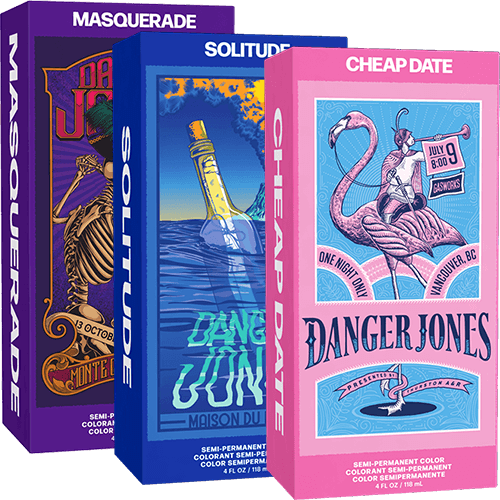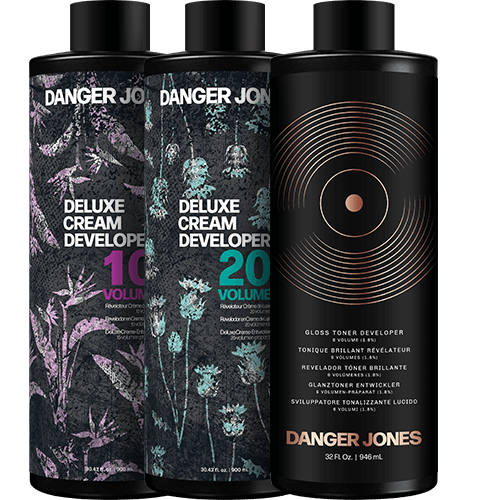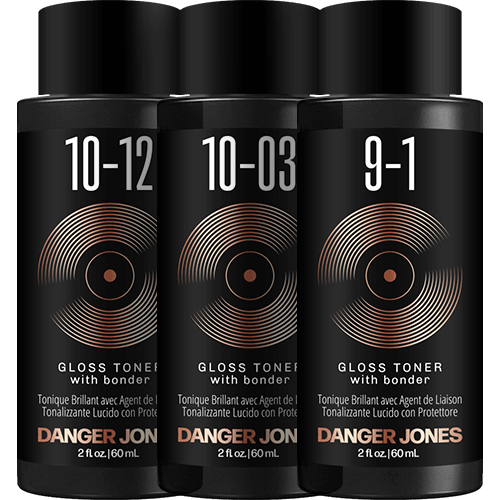
All packaging materials that make up our semi-permanent colors can be recycled by using most curbside recycling bins. The carton is made of paper (PAP 22), the cap is high-density polyethylene plastic (#2 HDPE) and tube is polypropylene plastic (#5 PP).
Clean: Ensure all recycling components are clean from any residue or contaminants by rinsing or wiping. Contamination can affect the recycling process.
Check Local Guidelines: Always stay informed about the specific recycling guidelines in your local area, as they can change. Contact your local waste management authority or visit their website for the most accurate and up-to-date information on recycling practices for all materials in your specific location.

Our Color Remover powder is packaged in a multi-layer foil and laminated sachet (C/LDPE 90) which maintains the integrity and safety of the product. These layers are excellent at keeping out moisture, oxygen and light which would otherwise compromise the powder.
Currently, these layers cannot be made from recycled materials nor can they be recycled after use. Although nothing exists on the market yet that has the perfect balance of sustainability and protection, we're continuing to look into this behind the scenes and hope to have additional options in the future.
Check Local Guidelines: Always stay informed about the specific recycling guidelines in your local area, as they can change. Contact your local waste management authority or visit their website for the most accurate and up-to-date information on recycling practices for all materials in your specific location.

The lid (#2 HDPE) and scoop (#5 PP) can be recycled using most curbside recycling bins. Our Lightener canister is made from a total of 47% recycled content (aluminum, cardboard, and lining; C/PAP 82). Currently, due to the chemical contact and protection of these layers, our canisters can’t be recycled after use. We’re continuing to work behind the scenes at finding additional options for a more recyclable material after use that doesn’t compromise the integrity and safety of the product. While we work behind the scenes, we encourage artists to find creative ways of repurposing our canisters. Some clever ideas we’ve seen are using them for storing hair clips, and tint brushes.
Clean: Ensure all recycling components are clean from any residue or contaminants by rinsing or wiping. Contamination can affect the recycling process.
Check Local Guidelines: Always stay informed about the specific recycling guidelines in your local area, as they can change. Contact your local waste management authority or visit their website for the most accurate and up-to-date information on recycling practices for all materials in your specific location.

Our Danger Jones developer (activator) caps (#2 HDPE) and bottles (#5 PP) can be recycled using most curbside recycling bins.
Clean: Ensure all recycling components are clean from any residue or contaminants by rinsing or wiping. Contamination can affect the recycling process.
Check Local Guidelines: Always stay informed about the specific recycling guidelines in your local area, as they can change. Contact your local waste management authority or visit their website for the most accurate and up-to-date information on recycling practices for all materials in your specific location.

Our Danger Jones Gloss Toner caps (#5 PP) can be recycled using most curbside recycling bins. The specialized and multi-layer plastic bottles (#3 PVC), maintain the integrity and safety of the liquid color inside. These layers are excellent at keeping out moisture, oxygen, and light which would otherwise compromise the liquid color. Currently, these layers cannot be made from recycled materials. After use, they may be recycled in certain areas through specific programs. Although nothing exists on the market yet that has the perfect balance of sustainability and protection, we're continuing to look into this behind the scenes and hope to have additional options in the future.
Clean: Ensure all recycling components are clean from any residue or contaminants by rinsing or wiping. Contamination can affect the recycling process.
Check Local Guidelines: Always stay informed about the specific recycling guidelines in your local area, as they can change. Contact your local waste management authority or visit their website for the most accurate and up-to-date information on recycling practices for all materials in your specific location.